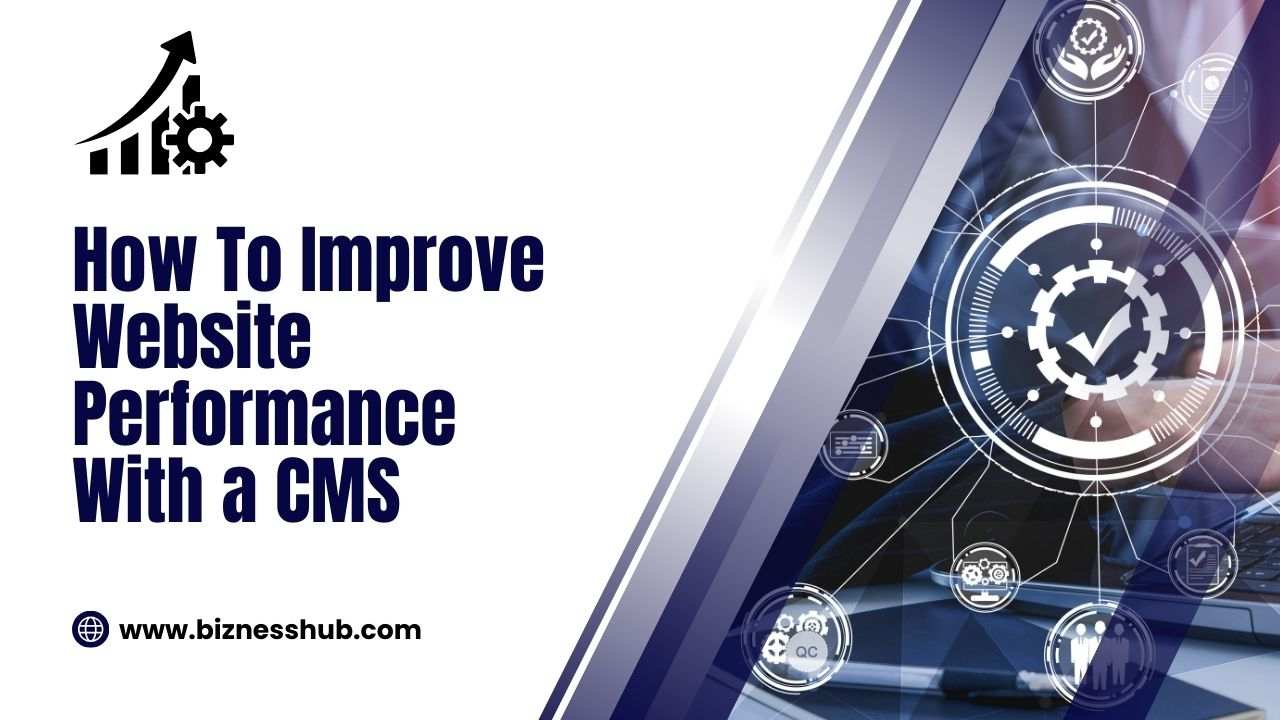In today’s computerized scene, site execution is vital for giving an ideal client involvement and upgrading look motor optimization (SEO). Fast-loading websites not as it were keep clients locked in but also rank higher on look motors, driving more natural activity. Moderate websites, on the other hand, baffle clients, driving them to higher bounce rates and lower transformation rates. Here a CMS plays her crucial role in boosting website performance.
Content Administration Frameworks (CMS) have revolutionized site improvement by making it available to non-technical clients. In any case, CMS stages can present execution issues if not legitimately overseen. The complexity of a CMS, combined with the utilization of subjects, plugins, and third-party integrative, can lead to slower stack times. This article will investigate methodologies to use CMS development services, optimize past the CMS, and keep up crest performance.
Leveraging Your CMS for Speed
CMS stages come with built-in highlights and functionalities planned to upgrade site execution. Understanding and utilizing these highlights can altogether make strides in your site’s speed and efficiency.
Built-in Features of CMS
Caching is one of the most successful ways to make strides in site execution. CMS stages like WordPress, Joomla, and Drupal offer caching plugins and built-in alternatives to store duplicates of web pages and serve them rapidly to users.
Caching Feature of a CMS
Page Caching: This includes putting away an inactive adaptation of your website’s pages. When a client visits the location, the CMS serves the cached page instead of producing it powerfully, decreasing the server stack and speeding up stack times.
Object Caching: This store’s database inquiry comes about, diminishing the requirement to query the database more than once and subsequently speeding up page stack times.
Opcode Caching: This sort of caching stores compiled PHP code, so the server doesn’t have to recompile the code on each request.
Image Optimization Feature of CMS
Images altogether affect site stack times. Numerous CMS stages give apparatuses for programmed picture optimization.
Automatic Compression: CMS plugins can compress pictures without losing quality, decreasing record sizes and speeding up stack times.
Responsive Pictures: CMS stages regularly bolster responsive pictures that adjust to the user’s gadget, assisting in optimizing performance.
Content Conveyance Systems (CDNs)
Integrating a CDN with your CMS can immensely move forward substance conveyance speed. CDNs disseminate your website’s inactive substance (like pictures, CSS, and JavaScript records) over different servers around the world. When clients get to your location, the CDN serves the substance from the closest server, lessening idleness and making strides stack times.
Optimizing Past the CMS
While CMS stages offer numerous built-in optimization highlights, assist changes can be made by centring on topic and plugin determination, substance administration, and outside factors.
Theme and Plugin Selection
Choose Lightweight Topics and Plugins
Lightweight Subjects: Select subjects that are well-coded and optimized for speed. Maintain a strategic distance from topics stacked with highlights you don’t require, as they can bloat your website.
Essential Plugins: Utilize as were basic plugins and guarantee they are lightweight. Each extra plugin can include the website’s stack time, so it’s critical to assess their necessity.
Regularly Upgrade Subjects and Plugins
Keeping subjects and plugins up to date is vital for keeping up execution and security. Engineers frequently discharge upgrades that progress speed and settle bugs, so normal overhauls guarantee your location runs efficiently.
Content Management
Optimize Picture Sizes
Before uploading pictures to your CMS, resize and compress them. Apparatuses like Photoshop, TinyPNG, and JPEGoptim can altogether diminish picture record sizes without compromising quality.
Implement Sluggish Loading
Lazy stacking concedes the stacking of pictures and other media until they are required, such as when they show up in the user’s viewport. This method diminishes beginning page stack times and generally transmission capacity usage.
Minify and Combine CSS and JavaScript Files
Minifying includes expelling superfluous characters from CSS and JavaScript records (like spaces and comments) to decrease record sizes. Combining different records into one diminishes the number of HTTP demands, speeding up stack times. Numerous CMS stages have plugins that computerize this process.
External Factors
Choose a Dependable Web Facilitating Provider
The quality of your web-facilitating supplier plays a noteworthy part in your website’s execution. See for suppliers that offer:
Solid State Drives (SSDs): These are quicker than conventional difficult drives and can essentially make strides stack times.
Content Conveyance Organize (CDN) Integration: A few facilitating suppliers offer coordinated CDN services.
Scalable Assets: Guarantee your facilitating arrangement can handle activity spikes without abating down.
Utilize Site Execution Testing Tools

Regularly test your website’s execution utilizing apparatuses like Google PageSpeed Bits of Knowledge, GTmetrix, and Pingdom. These devices give bits of knowledge into your site’s speed and prescribe particular improvements.
Maintaining Top Performance Using a CMS
Website execution optimization is not a one-time assignment. Continuous upkeep and observation are fundamental to guarantee your location proceeds to perform well.
Schedule Standard Site Upkeep Tasks With a CMS
Regular upkeep errands incorporate upgrading your CMS, topics, and plugins, checking for broken joins, and cleaning up your database. Planning these assignments makes a difference in avoiding execution corruption over time.
Monitor Site Execution Measurements and Client Behavior
Use analytics devices to screen key execution measurements such as stack times, bounce rates, and client engagement. Understanding how clients associated with your location can offer assistance you recognising and addressing execution issues.
Stay Upgraded with the Most recent CMS Execution Optimization Techniques
The web advancement scene is always advancing, with unused instruments and strategies rising routinely. Remain educated on almost the most recent best phones and overhauls related to your CMS to keep your site performing optimally.
Conclusion
Improving site performance with a CMS involves leveraging built-in features, optimizing beyond the CMS, and maintaining ongoing performance. Key strategies include utilizing caching, optimizing images, integrating CDNs, selecting lightweight themes and plugins, and performing regular maintenance. By focusing on these areas and staying proactive with monitoring and updates, you can ensure your CMS-powered website delivers a fast, efficient, and engaging experience for users, ultimately benefiting both customer satisfaction and SEO rankings.




